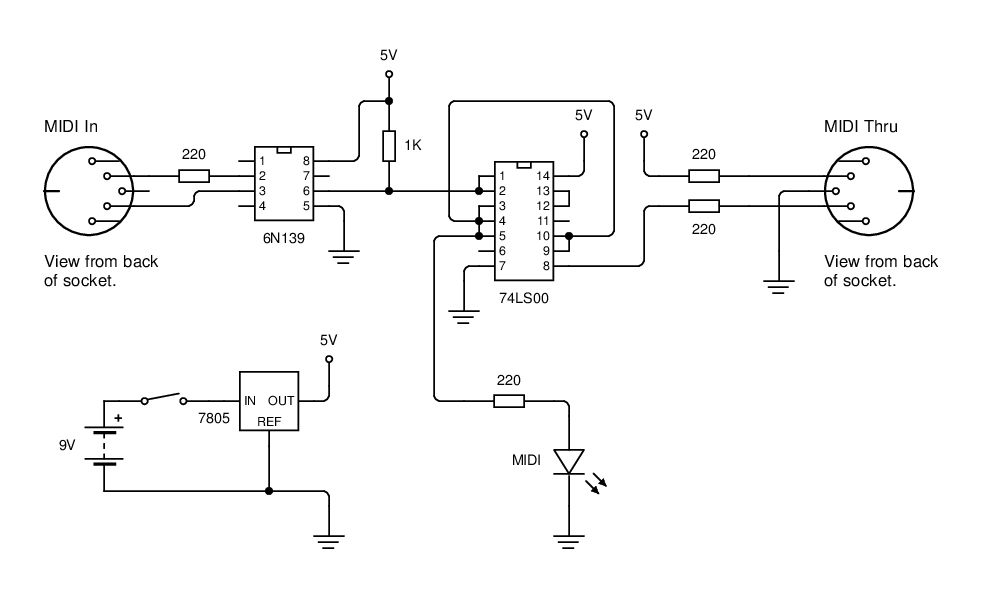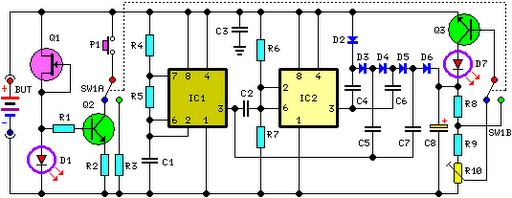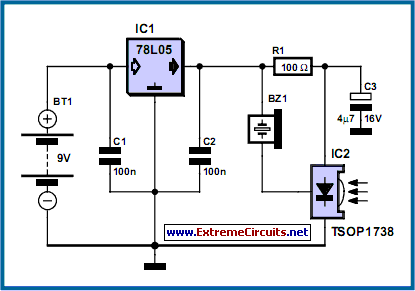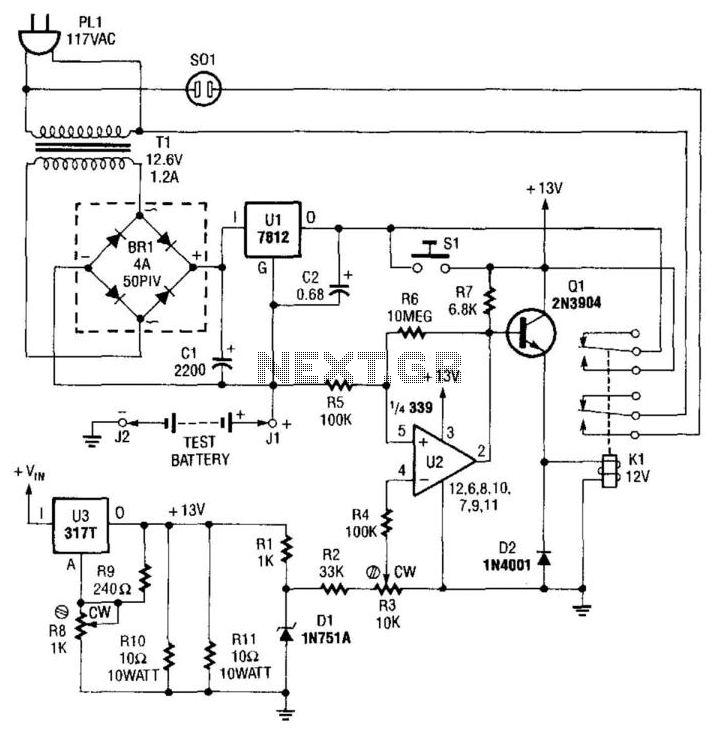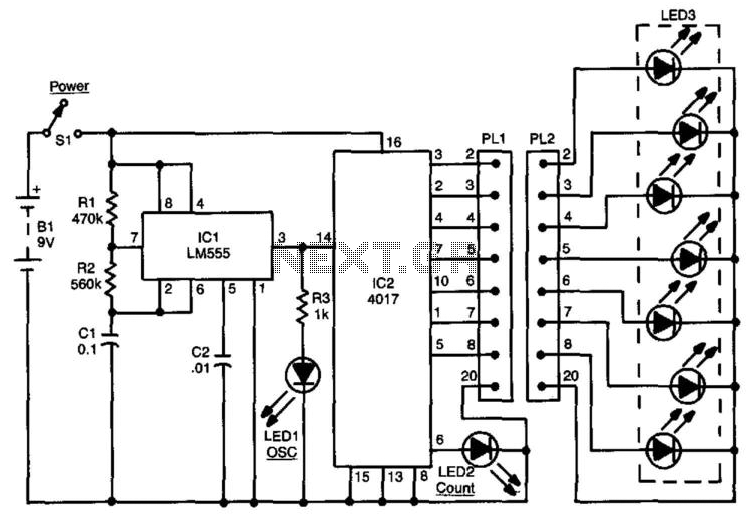
TDA7360 Stereo Test and ApplicationCircuit and Datasheet
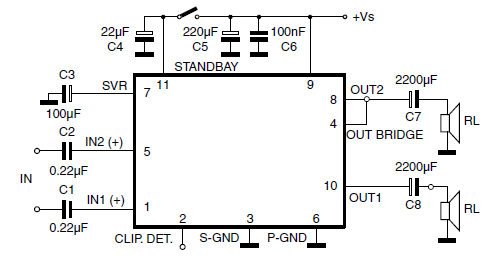
The car radio application utilizes a Class AB Audio Power Amplifier, typically featuring the TDA7360 IC. This amplifier provides 22W output in either bridge or stereo configuration and includes several beneficial features such as a minimal requirement for external components, high output power, fixed gain, and a clipping detector. The accompanying circuit diagram illustrates the TDA7360 stereo test and application circuit schematic. Recommended values for the external components of this circuit include a 0.22 µF capacitor (C1) for input decoupling on channel 1.
The TDA7360 is designed for automotive audio applications, providing robust performance in both bridge and stereo modes. It is capable of delivering high-quality audio output, making it suitable for integration into car radio systems. The amplifier's architecture allows for efficient power management, ensuring minimal heat generation while maintaining sound fidelity.
The circuit schematic typically includes input and output connections, power supply pins, and additional components that support the amplifier's operation. For instance, the input decoupling capacitor (C1) plays a crucial role in filtering out noise and stabilizing the input signal, thereby enhancing audio clarity. Other components may include resistors for gain adjustment, additional capacitors for power supply stabilization, and a clipping detector circuit that provides feedback on the amplifier's output performance, preventing distortion during operation.
When designing a circuit using the TDA7360, it is essential to adhere to the recommended values for external components to ensure optimal performance. This includes selecting capacitors and resistors with appropriate voltage ratings and tolerances. The layout of the circuit board should also be considered, as proper grounding and component placement can significantly affect the amplifier's efficiency and audio quality.
In summary, the TDA7360 Class AB Audio Power Amplifier is a versatile and efficient solution for car radio applications, providing high output power and excellent audio performance with minimal external components. Careful consideration of the circuit design and component selection is vital for achieving the best results in automotive audio systems.Car radio application using class AB Audio Power Amplifier usually has TDA7360 inside it. It is a22W bridge or stereo audio ampwith features such as minimum external components, high output power, fixed gain, clipping detector and etc. Above circuit diagram shows thisTDA7360 stereo test and application circuit schematic. Value recommendation of ea ch external components of this circuit can be described as follows:1. C1 for input decoupling (CH1) is 0. 22 uF 🔗 External reference
The TDA7360 is designed for automotive audio applications, providing robust performance in both bridge and stereo modes. It is capable of delivering high-quality audio output, making it suitable for integration into car radio systems. The amplifier's architecture allows for efficient power management, ensuring minimal heat generation while maintaining sound fidelity.
The circuit schematic typically includes input and output connections, power supply pins, and additional components that support the amplifier's operation. For instance, the input decoupling capacitor (C1) plays a crucial role in filtering out noise and stabilizing the input signal, thereby enhancing audio clarity. Other components may include resistors for gain adjustment, additional capacitors for power supply stabilization, and a clipping detector circuit that provides feedback on the amplifier's output performance, preventing distortion during operation.
When designing a circuit using the TDA7360, it is essential to adhere to the recommended values for external components to ensure optimal performance. This includes selecting capacitors and resistors with appropriate voltage ratings and tolerances. The layout of the circuit board should also be considered, as proper grounding and component placement can significantly affect the amplifier's efficiency and audio quality.
In summary, the TDA7360 Class AB Audio Power Amplifier is a versatile and efficient solution for car radio applications, providing high output power and excellent audio performance with minimal external components. Careful consideration of the circuit design and component selection is vital for achieving the best results in automotive audio systems.Car radio application using class AB Audio Power Amplifier usually has TDA7360 inside it. It is a22W bridge or stereo audio ampwith features such as minimum external components, high output power, fixed gain, clipping detector and etc. Above circuit diagram shows thisTDA7360 stereo test and application circuit schematic. Value recommendation of ea ch external components of this circuit can be described as follows:1. C1 for input decoupling (CH1) is 0. 22 uF 🔗 External reference
